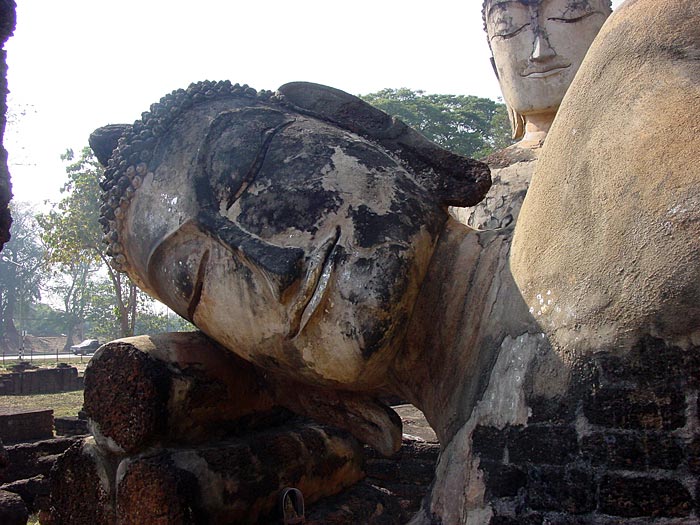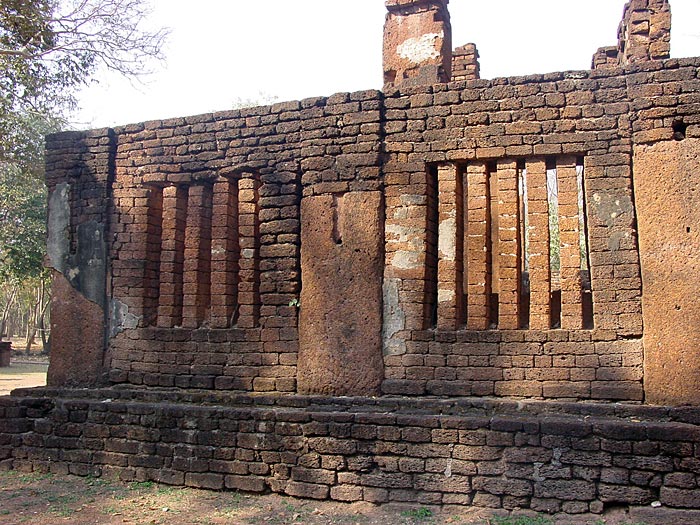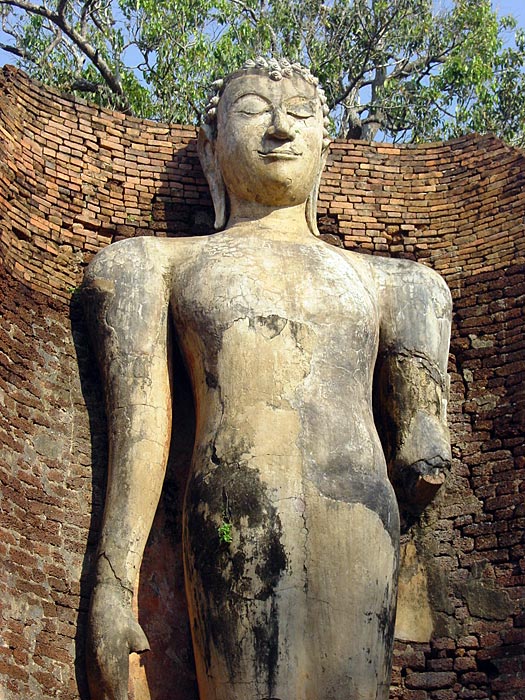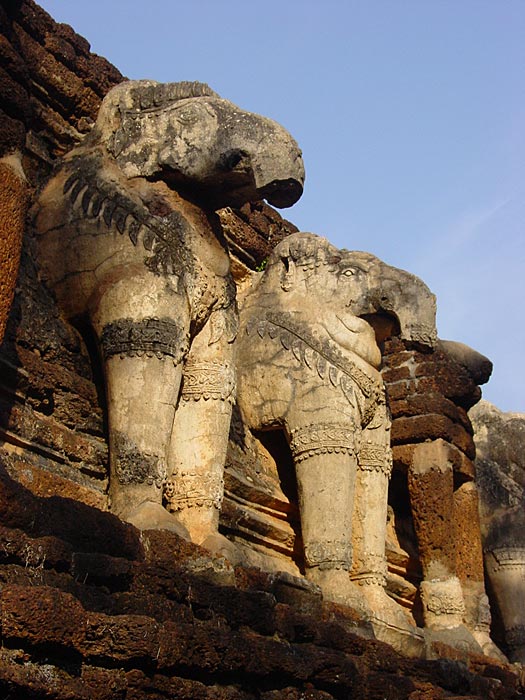Kamphaeng Phet Historical Park
Kamphaeng Phet province is located south of Sukhothai province, and is 358 km away from Bangkok. Kamphaeng Phet was formerly also known as Nakhon Chom. Settlements along the Ping River were present in the 11th century. The region for a while was an outpost of the Khmer Empire, and later in the 13th century became part of the Sukhothai Kingdom. Kamphaeng Phet was not mentioned on the early Sukhothai inscription stones (while other cities were), indicating that it was initially not incorporated into the Kingdom or not of great importance. However it was recognized as a town of significance during the reign of King Li Thai.

Reclining Buddha at Wat Phrakaew, Kamphaeng Phet Historical Park
The Kamphaeng Phet historical park has been established at the Old City site, and the area is now being cared for by the Fine Arts Department.

'Windows' at a wihan (vihara) at Wat Phrakaew, Kamphaeng Phet historical park
While not quite on the scale of Sukhothai or even Si Satchanalai, the Kamphaeng Phet historical park covers an extensive area, located mostly within surrounding forests. The Royal Palace itself has been destroyed. Wat Phrakaew is the largest monastery and located adjacent to the old Royal Palace. It contains several wihans (viharas), an ordination hall, and a large chedi. There are some restored Buddha images on the site.
Scattered throughout the forest are the Aranyik Ruins. These remain of the many forest monasteries that were prevalent at the time of the old city. Most date to the 14-16th centuries.

Standing Buddha, Wat Si Iriyabot, Kamphaeng Phet historical park. Large monastery that originally housed large Buddha images in four different positions. A standing (restored) Buddha is the only remaining large image.
As the sites at Sukhothai and Si Satchanalai, Kamphaeng Phet also has a Wat Chang Rop, where the base of the large chedi has the laterite sculptures of the forequarters of elephants. The laterite originally was covered with stucco decorations. Some have been restored.

Elephant sculptures around Wat Chang Rop
The Kamphaeng Phet National Museum, as most provincial museums at important historic sites, houses quite a few interesting artefacts, sculptures and Buddha images. The most well known and quite striking statue is a bronze Shiva dated from about 1510 A.D. It indicates the importance of Hindu deities, even at the time Buddhism was well established as the religion of Sukhothai and later Ayutthaya. Unfortunately, no pictures can be taken at this National Museum.

